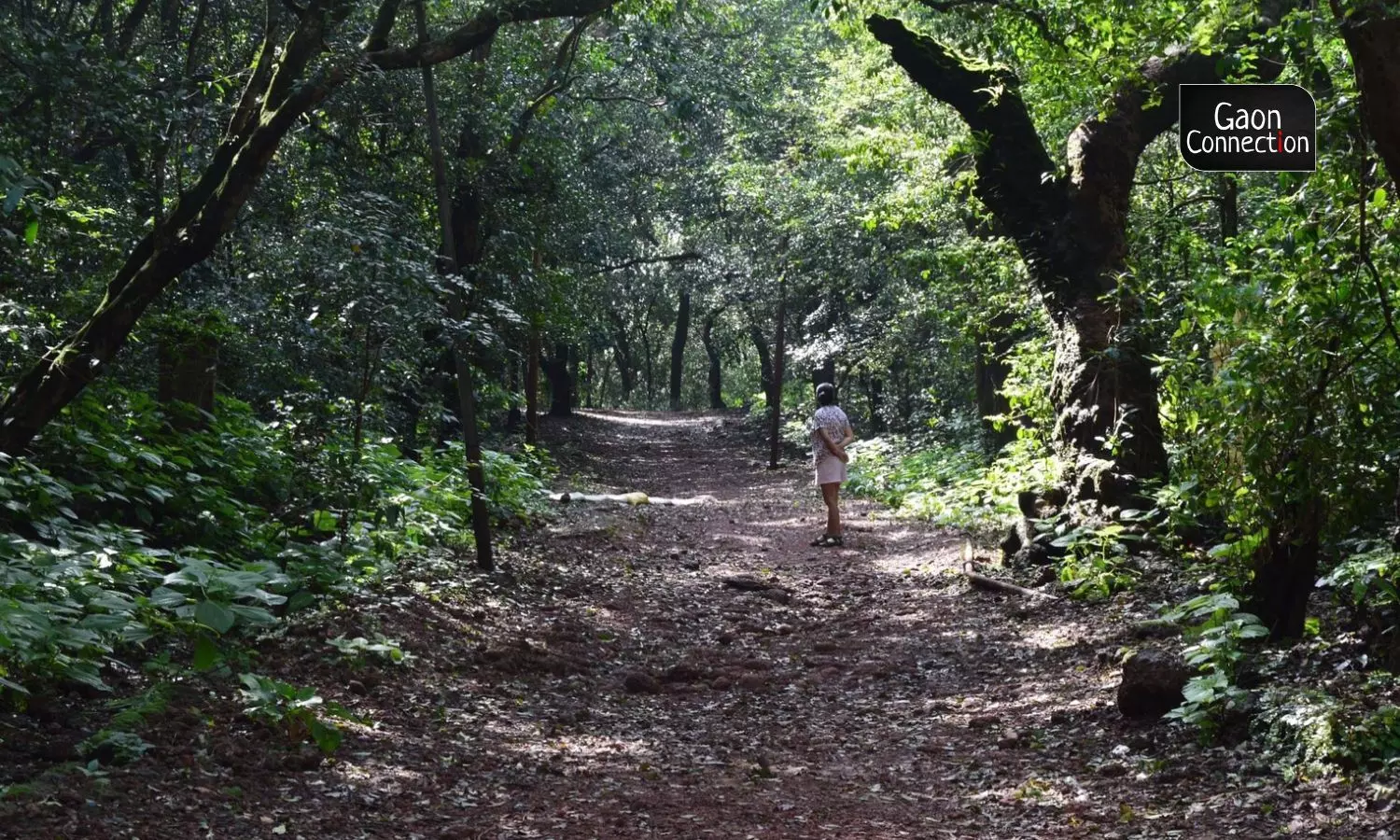The Sounds of Silence in Matheran
The eco-sensitive hill station in Maharashtra has no pucca roads and vehicles are a strict no-no. The only sound is that of birds in the daytime, and crickets at night. Or, perhaps the pitter-patter of raindrops on the window panes and on the red-tiled roofs of cottages. Matheran is a perfect getaway from the high-on-steroid urban lifestyles.
 Nidhi Jamwal 27 Dec 2022 8:07 AM GMT
Nidhi Jamwal 27 Dec 2022 8:07 AM GMT

Barely 100-kilometres from the over-populated concrete jungle of Mumbai, is the country’s smallest hill station — Matheran, where tall trees reach up to the heavens. All photos by Nidhi Jamwal
Time stands still at Matheran, perched atop the Sahyadri range of the Western Ghats. The only thing that moves, or rather floats gently, are the misty clouds which descend every now and then on this hill station.
Barely 100-kilometres from the over-populated concrete jungle of Mumbai, India's commercial capital where I live, is the country's smallest hill station — Matheran, where tall trees reach up to the heavens.
Despite being a popular weekend destination for residents of Mumbai and Pune, Matheran has held on to its old world charm. There are no pucca roads here. Also, it is the only hill station in the country (some even claim the only one in Asia) where there are no cars, no cabs, no buses, no auto-rickshaws, not even a two-wheeler scooter.
In Matheran, the only thing that moves, or rather floats gently, are the misty clouds which descend every now and then on this hill station.
Local inhabitants walk everywhere, as do the tourists. Those who are old or have mobility issues hire hand-pulled carts, or horses. The horse-keepers of Matheran are expert guides. They draw the attention of tourists to the various birds there and also spare no effort to tell them which Bollywood song was shot hereabouts.
Also Read: Rural getaways for a rejuvenating experience
Matheran offers the perfect detox to the weary urban visitors. They have to park about three kilometres short of the hill station, at the Dasturi car park, and walk to their destination. A perfect way to distance oneself from urban clutter and chaos, and surrender to the life-giving forests around.
At the far end of the hill station, deep inside the wood, lies a red cottage, part of the 125-year-old heritage property.
Matheran means "forest on the forehead" (of the mountains) in Marathi. The plateau of Matheran is surrounded by dense deciduous and semi-evergreen forests. Its porous red laterite soil soaks up the heavy monsoon rains and sustains its unique and diverse flora. The hill station has reported 140 species of butterflies and 200 bird species. Researchers have also recorded 28 species of snakes.
Matheran is a storehouse of a huge number of medicinal herbs and plants, which are safeguarded by the lush trees and the perennial mist that envelops this hill station.
The plateau of Matheran is surrounded by dense deciduous and semi-evergreen forests. Its porous red laterite soil soaks up the heavy monsoon rains and sustains its unique and diverse flora.
The beauty of Matheran multiplies manifold during the four months of the southwest monsoon (June to September) when the hill station receives very heavy rainfall and the lakes and waterfalls spring to life. Even from the foothills, one can spot the milky white waterfalls flowing down the dark-coloured volcanic lava rock plateau upon which Matheran is perched.
(Matheran is part of the Deccan Traps — one of the largest volcanic provinces in the world; most of the basalt has erupted between 65 and 60 million years ago).
Also Read: The Gond Warrior Queens, a Hill Fort and its Baoris
The only sound is that of birds in the daytime, and crickets at night. Or, perhaps the pitter-patter of raindrops on the window panes and on the red-tiled roofs of cottages. They are soothing and a far cry from the never-ending cacophony of Mumbai.
The beauty of Matheran multiplies manifold during the four months of the southwest monsoon (June to September) when the hill station receives very heavy rainfall.
Narrow red-laterite jungle trails lead to resorts and cottages, some of which are over 100-year-old.
A visit to Matheran is an opportunity to pause, lie low, reflect, and recuperate. Days begin with morning jungle trails and end with an early evening jungle walk. Or perhaps spectacular sunsets at key locations at the hill station.
Aimless walks in Matheran, are interspersed with hot sips of chai and kanda-bhajiya, or bhutta roasted on embers made fresh by the local tribal women.
Also Read: The Ger of the Nomads of Mongolia
At the far end of the hill station, deep inside the wood, lies a red cottage, part of the 125-year-old heritage property, where the colourful mosaic flooring and the high wooden ceilings with old wood furniture transports one back to the British Raj era.
Forests surround the cottage and the narrow jungle trails where the only sounds are the crunch of the dried leaves underfoot, are a welcome break from the cheek-by-jowl skyscrapers and cemented landscape of Mumbai.
Despite being a popular weekend destination for residents of Mumbai and Pune, Matheran has held on to its old-world charm with no pucca roads here.
Matheran continues to exist in a time warp, with no pucca roads and no cars, because about 20 years ago, in 2003, the areas in and around it were declared an Eco-Sensitive Zone (ESZ) by the Indian government. Since 1981, environmental groups have been campaigning to preserve the fragile ecology of the region.
But there are talks of the government planning to introduce e-rickshaws in Matheran, and laying paver-blocks on the jungle trail from the Dasturi car park till Matheran is already underway. Will Matheran be able to save its old world charm?
Nidhi Jamwal is Managing Editor of Gaon Connection. Views are personal.
Maharastra Tourism Matheran
More Stories




